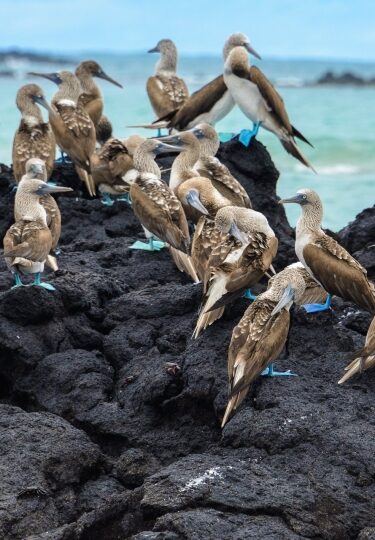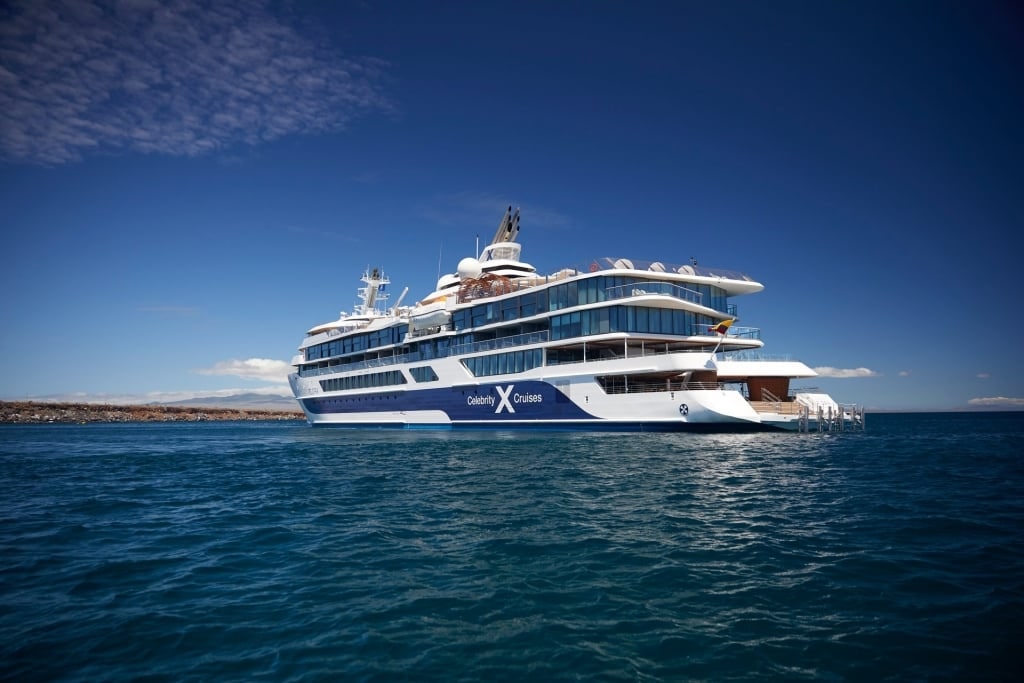The Galapagos Islands are a nature lover’s paradise. Made up of a collection of 19 islands off the coast of Ecuador, the Galapagos offer travelers volcanic landscapes, black sand beaches, and unique flora and fauna.
Animal lovers will be delighted to know that this stunning archipelago of islands has one of the highest percentages of endemic species on the planet, meaning you’ll find a large number of animal species in the Galapagos that aren’t found anywhere else in the world.
If you’re planning on heading on a trip to this eco-wonderland soon, here are some of the remarkable Galapagos animals you can see during your trip.
Galapagos Sea Lion
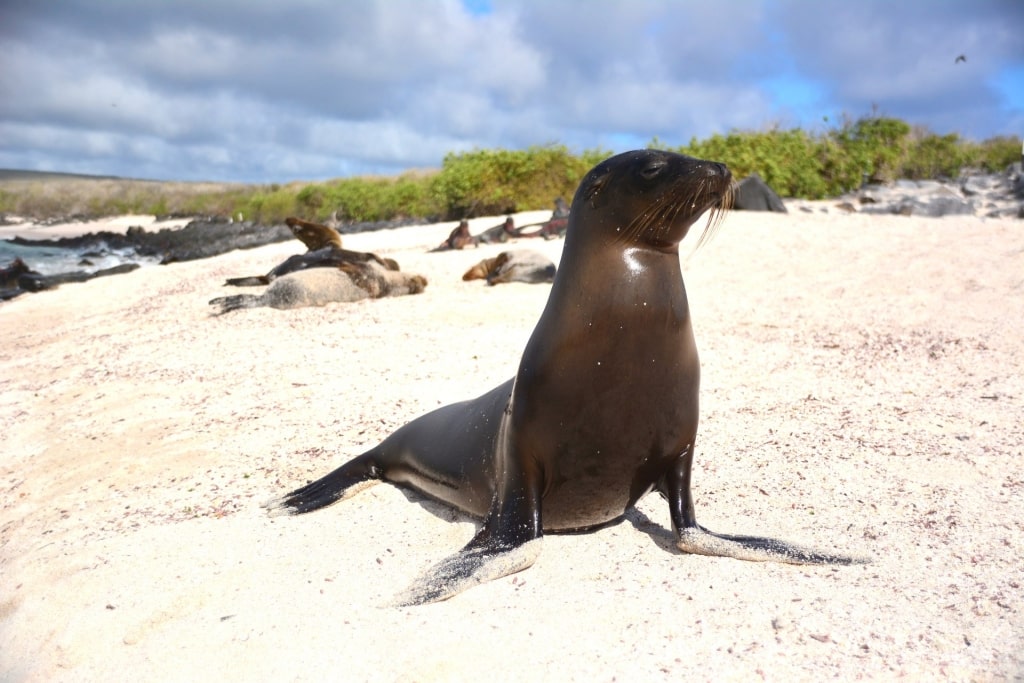
Galapagos sea lion
The sea lion is one of the first animals you’re likely to encounter during your Galapagos Islands vacation as there are over 20,000 of them in the island chain. Originally from California, the Galapagos sea lions adapted to the islands’ warmer environment and evolved into a different type of species. Sea lions are often spotted lounging on rocks, swimming in the ocean, or socializing on land with other sea lions, as they prefer to live in groups.
If you’re lucky, you might spot a sea lion pup in the wild. These baby animals are usually seen under the care of their mothers or learning how to swim in shallower areas.
Frigate Birds
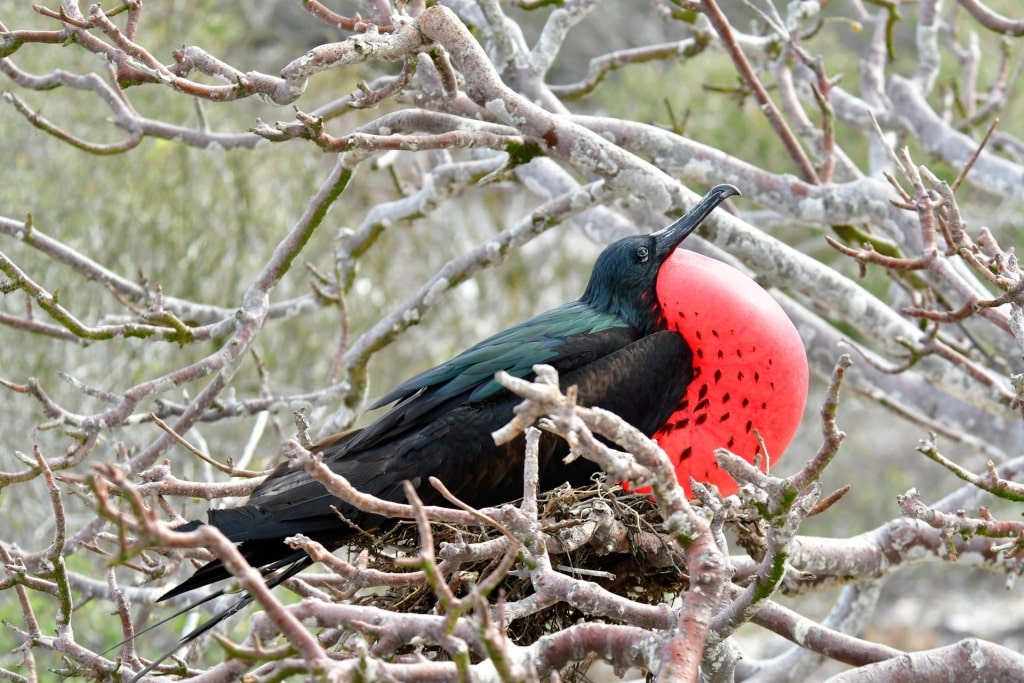
Frigate bird
Out of the five species of frigate birds in the world, you’ll be able to find two of them in the Galapagos: the great frigate bird and the magnificent frigate bird. They have hooked beaks and large black wings, but they are easily spotted because of their bright red throat pouches. If you’re visiting the Galapagos during their mating season, you’ll get to see the male species courting female attention by inflating their chests until they resemble big, red balloons.
The Galapagos animals aren’t seabirds (their feathers aren’t oiled), therefore you’ll never see them diving into the water like some other species—instead, they only graze the surface. They are known for snatching food out of the mouth of other birds, which is why they are named frigate, after the type of ships usually favored by pirates.
Land Iguanas
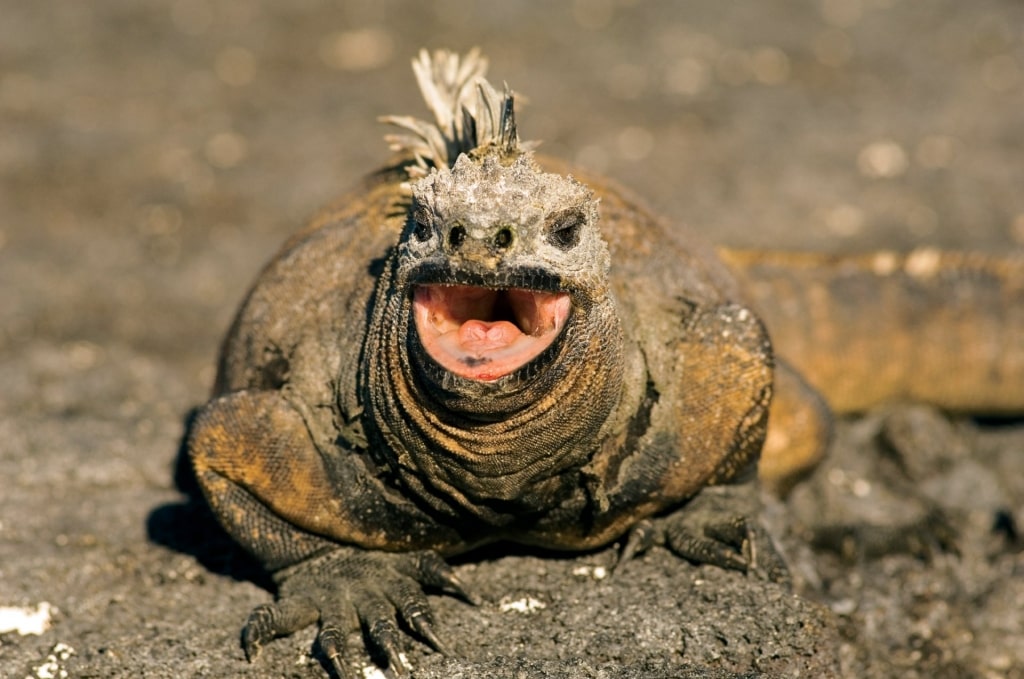
Land iguana
A few types of land iguanas live in the Galapagos Islands. The most inexhaustible and generally observed land iguanas are yellowy-orange and earthy colored. Be that as it may, the most novel and as of late found land iguana is the pink land iguana. It is discovered uniquely on Wolf Volcano at the northern finish of Isabela Island. The pink iguana has vertical dark stripes on its body.
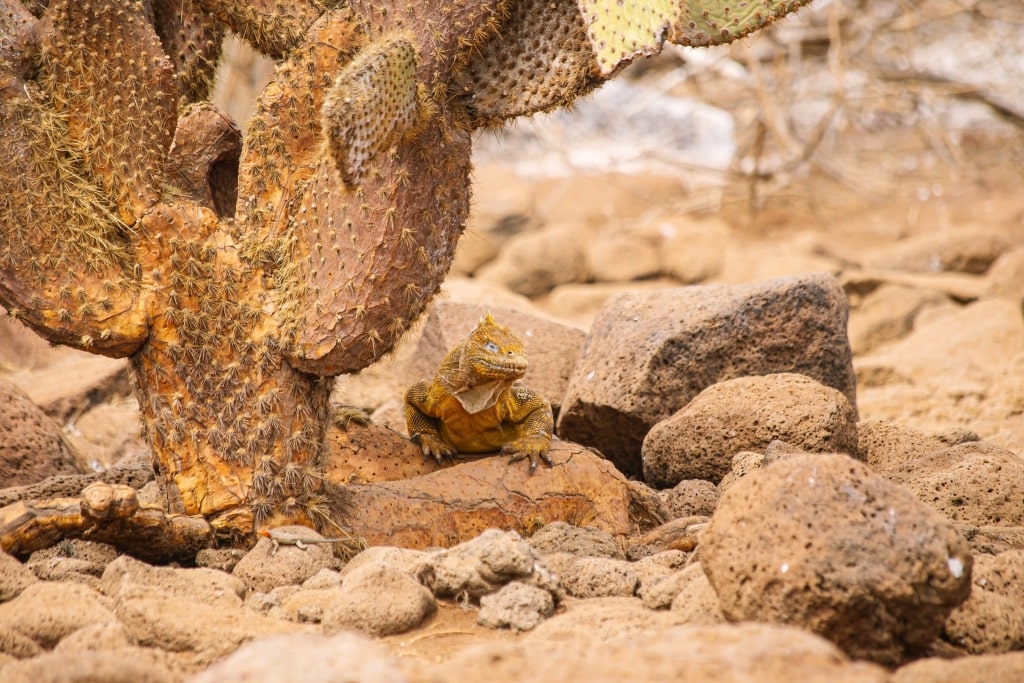
Land iguana
Land iguanas can develop to be multiple feet long, weigh as much as 30 pounds, and may live to be 50 years of age. During the day, they can be difficult to spot as they mix in well with the stones and vegetation. Land iguanas are cold-blooded reptiles, so they go through the day heating up in the sun or hanging in the shade to keep cool. Around evening time, they stay in shallow tunnels to safeguard their warmth.
Sally Lightfoot Crabs
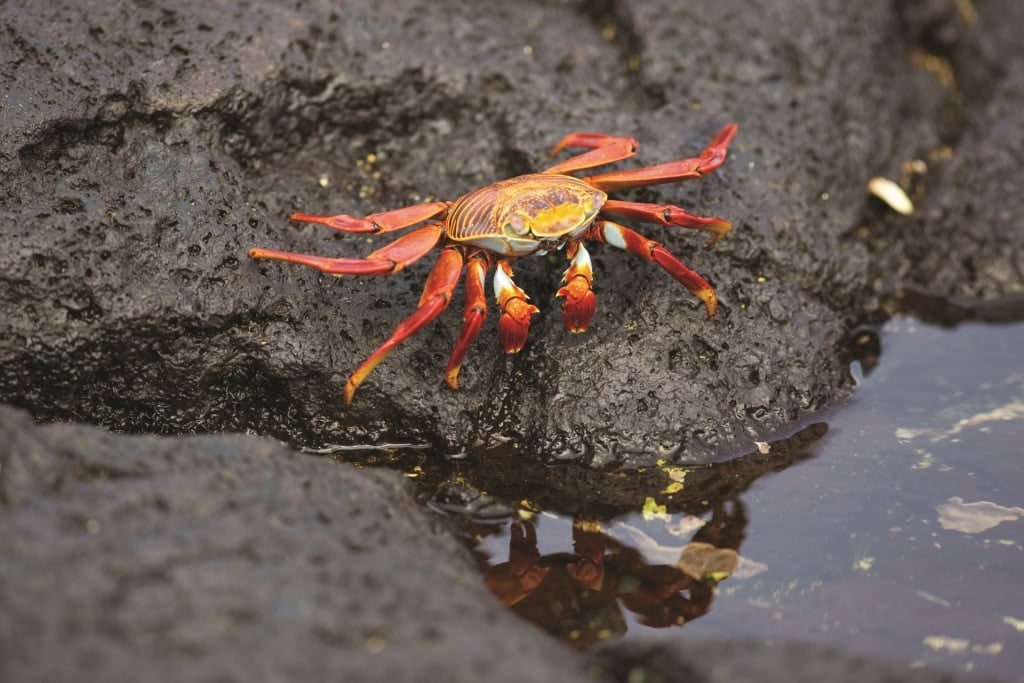
Sally lightfoot crab
The bright, colorful exterior of Sally Lightfoot Crabs makes them easy to spot from afar. Typically found on the rocky shores of the islands, these crabs play an important role in the Galapagos ecosystem, as they eat much of the debris on the shore as well as ticks found on marine iguanas. They are said to be named after a Caribbean dancer.
Green Sea Turtles
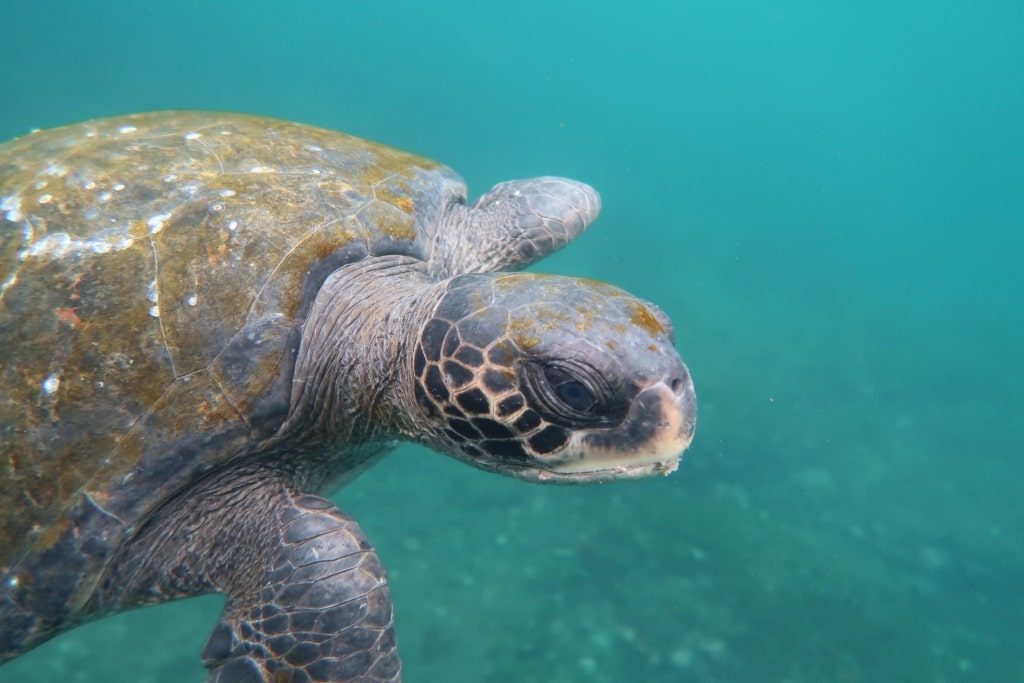
Green sea turtle
Snorkeling is one of the best things to do in the Galapagos Islands, where you are likely to spot a few green sea turtles. These friendly animals are able to remain underwater for up to five hours and can swim up to 35 miles an hour.
The green sea turtle is the only sea turtle species that nests on the islands. At night, female turtles make their way to the shore and lay as many as 200 eggs before heading back to the water before the sun comes out again.
Temperature is what determines the gender of these Galapagos animals. Warmer nest temperatures create females, while cooler temperatures lead to male offsprings. Once they hatch, the baby sea turtles must dig their way out of their nest and hurry off to the ocean before being eaten by predators. If they make it to the sea, they face even more challenges, and will have to avoid sharks and frigate birds to survive.
Galapagos Penguin
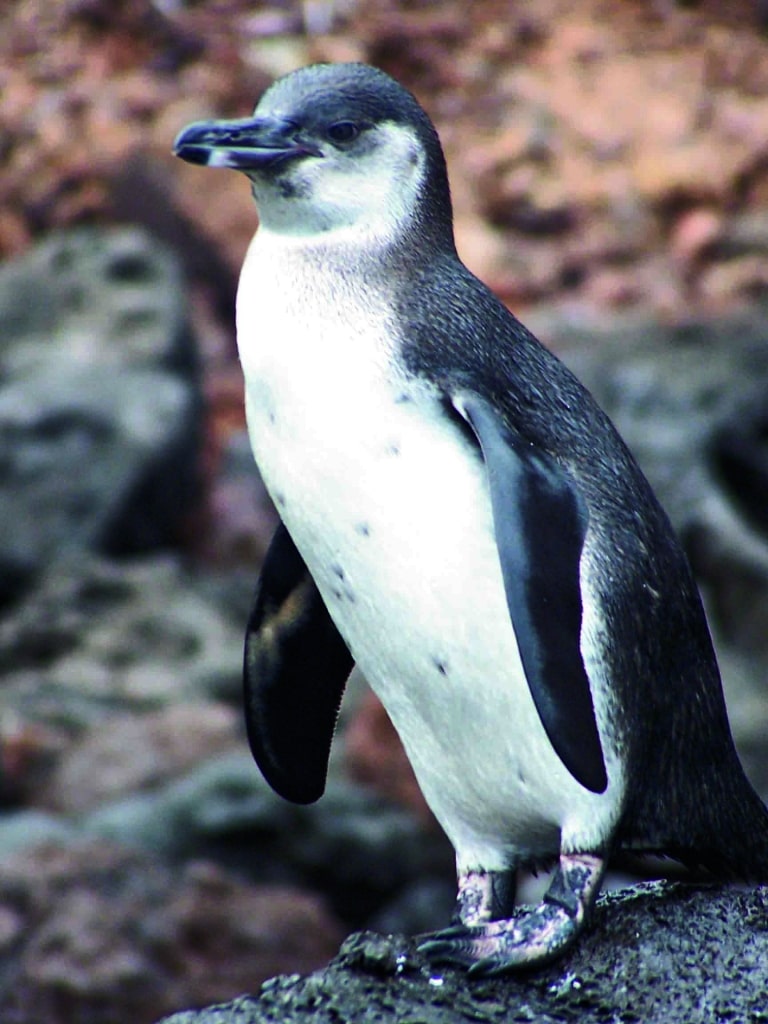
Galapagos penguin
Galapagos penguins are special because they are the only penguin species that is found north of the equator. These small animals are usually found in the colder areas of the Galapagos, mainly on Fernandina Island and Isabela Island, and tend to live in caves or crevices.
They primarily feed on schools of fish, preying on small species such as anchovies, sardines, and mullet. Their wings double as fins in the water, making them fast swimmers. Snorkelers should always be on the lookout as they are known to sneak up from behind in unexpected moments.
Darwin’s Finches
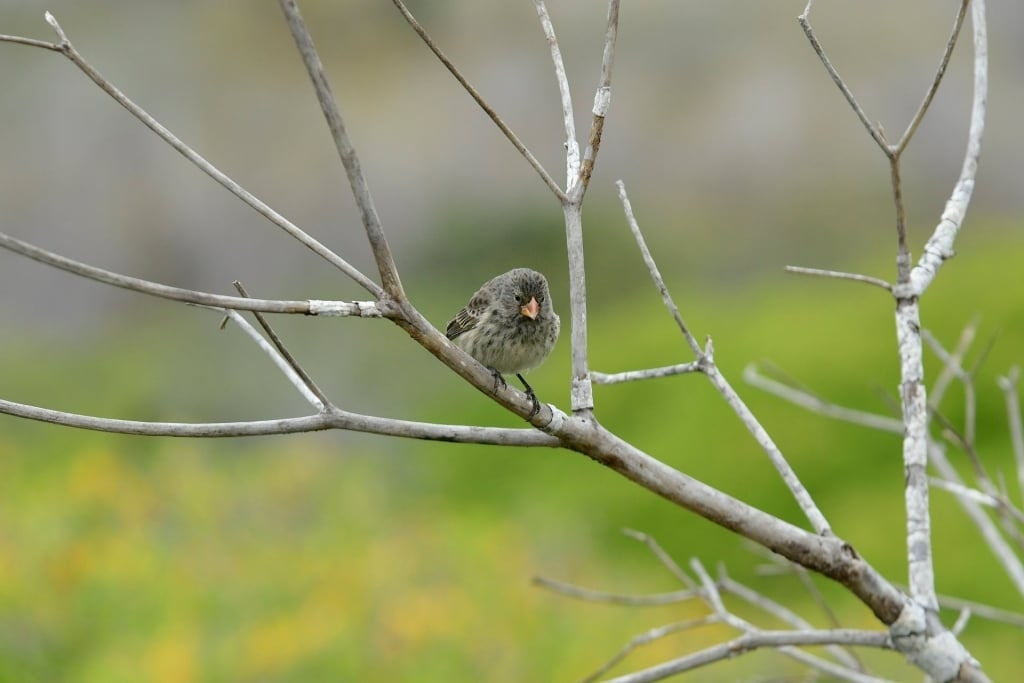
Darwin’s finches
There are 13 different species of Darwin’s finches, the small land bird named after biologist Charles Darwin, found in the Galapagos. While all species of Darwin’s finches are roughly the same size and color, they mostly vary by beak size and diet. These Galapagos birds were one of the subjects of Darwin’s evolutionary theories, since they developed different beak sizes and shapes in order to adapt to different environments and food sources. For example, the woodpecker finch uses twigs and cacti spine to hunt for prey, while the vampire ground finch mainly feeds on the blood of seabirds, hence its name.
Waved Albatross
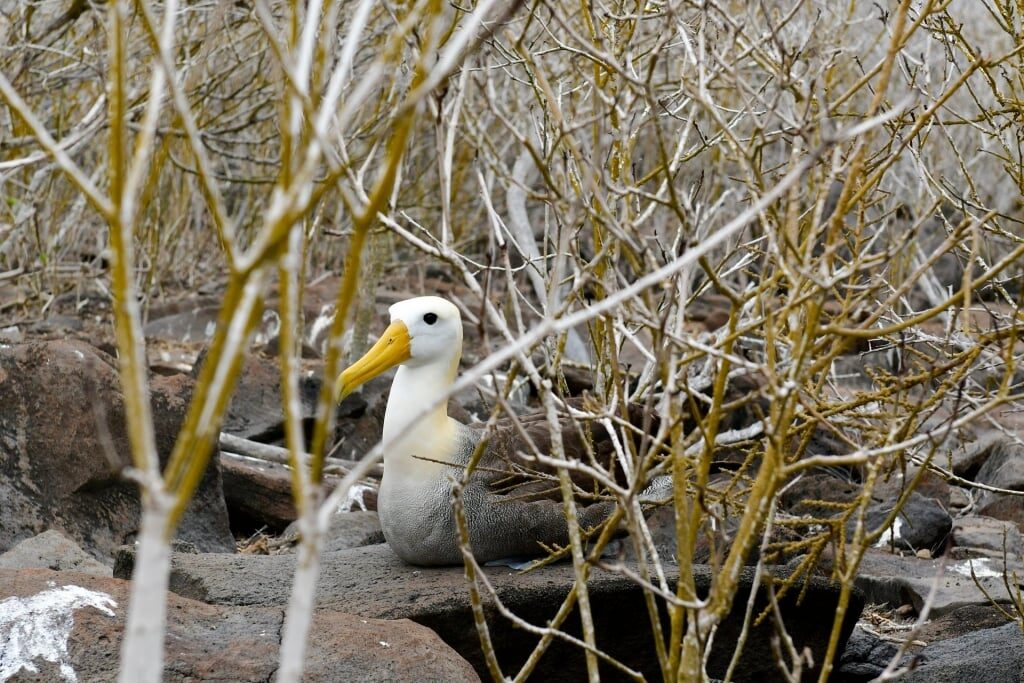
Waved albatross
One of the most spectacular sights in the Galapagos is the mating ritual of the waved albatross. These wide-winged birds, which are also the largest species of bird in the Galapagos, meet up with their lifetime partners on Española Island, the only breeding site in the world for the waved albatross. The monogamous birds then begin a courting dance, where they will bow to each other, open their bills, honk, and even clack their bills.
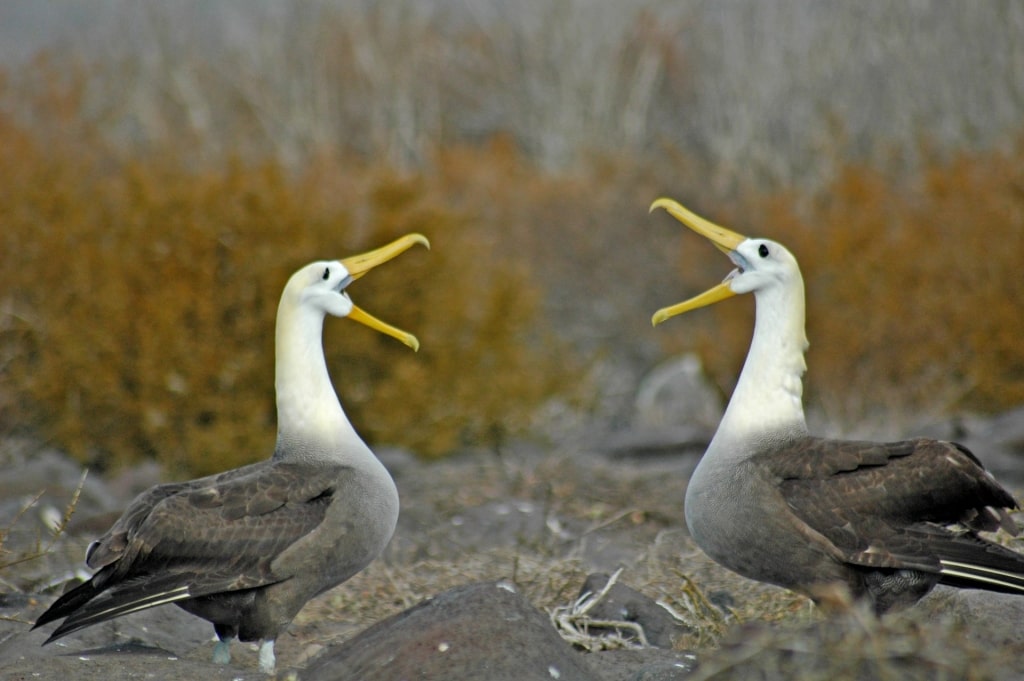
Waved albatross
After they mate, the female lays one egg and both the male and female birds take turns incubating their offspring until it hatches. If you’re lucky, you might be able to see baby waved albatrosses trying to fly for the first time.
When the albatrosses are not mating on Española Island, they can typically be found in the Ecuadorian and Peruvian continental shelf.
Flamingos
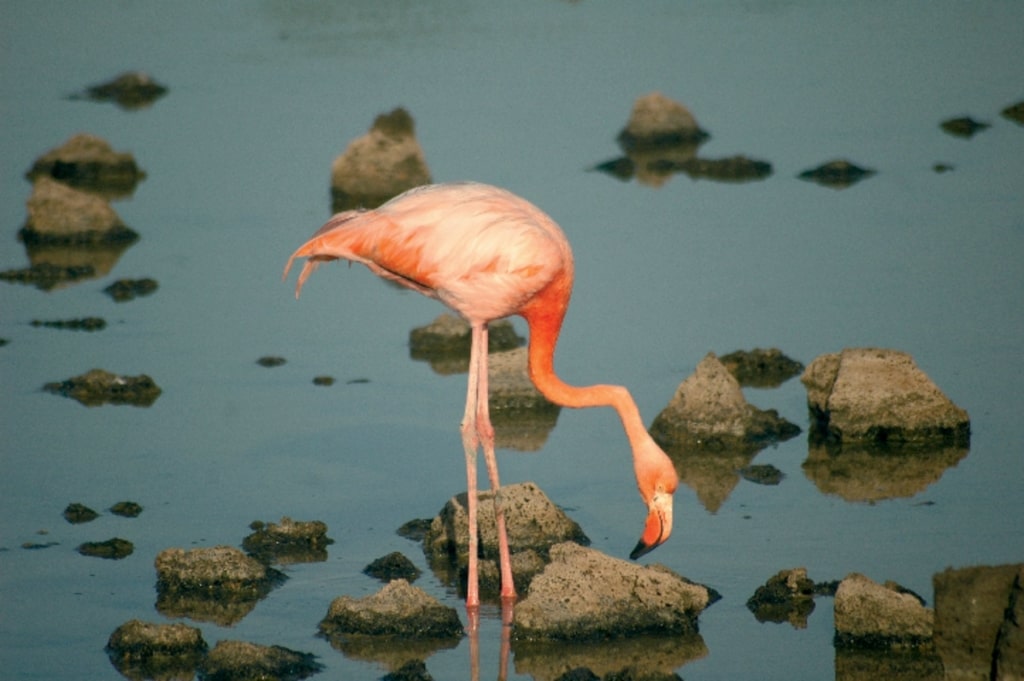
Flamingo
The bright pink flamingos of the Galapagos are similar in many ways to the American flamingo, except this species is much smaller and lays tinier eggs.
The flamingo’s signature hue is a product of its diet. Flamingos mainly feed on algae, crustaceans, and plants that contain high amounts of a carotenoid pigment that affects the intensity of the bird’s pink plumage and skin.
Galapagos flamingos are monogamous and mate in shallow waters. You can typically see them standing on one leg in order to reduce their body heat and physical effort. While they are social birds that live in colonies, they are usually shy around humans.
Unlike adult flamingos, chicks are usually born with a straight beak and a gray color, and it can take up to three weeks for their curves to bend. The best places to see flamingos in the Galapagos are Punta Cormorant, Floreana, and Puerto Villamil on Isabela Island.
Blue-Footed Boobies
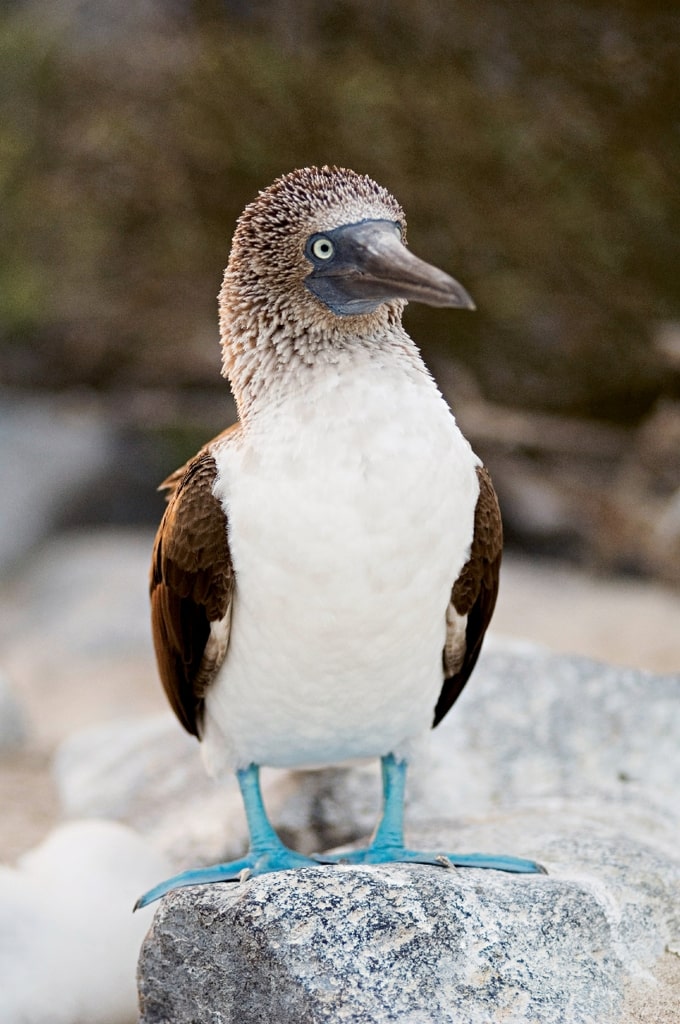
Blue-footed booby
The blue-footed booby is one of the most popular and recognizable Galapagos animals. Their name comes from their uniquely colored feet, which play an important part in their mating process. Males with more intense hues of blue on their feet are seen as more virile and ultimately attract more females. During their courtship, male blue-footed boobies gift a small stick or stone to their female counterparts and later show off their colorful feet to their potential match.
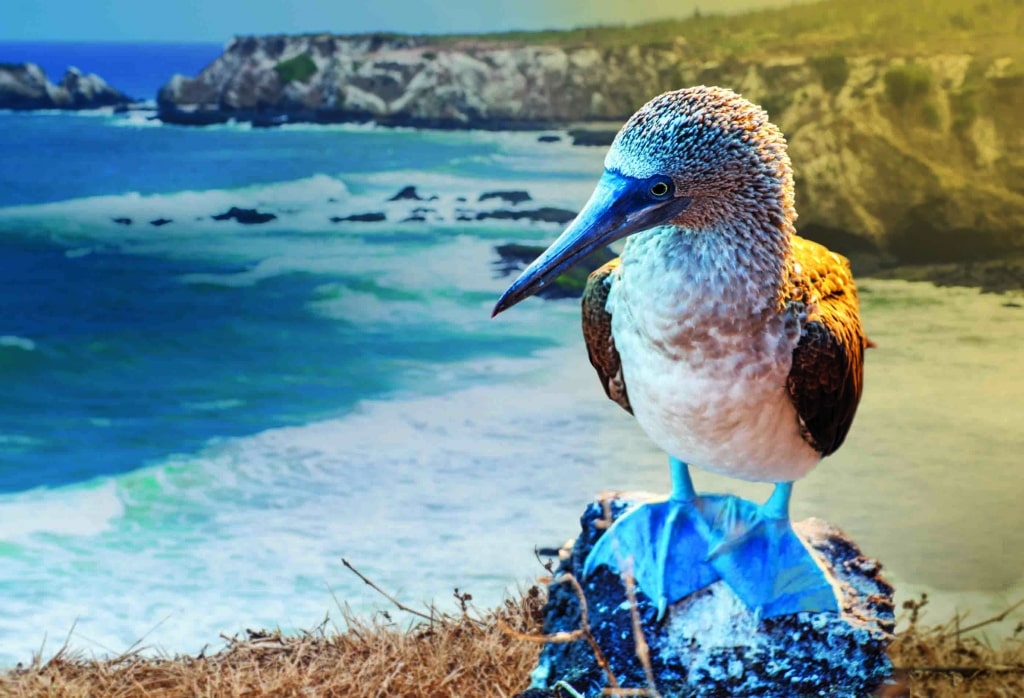
Blue-footed booby
These birds tend to feed near the shore by plunge-diving into the water and catching small species of fish, such as anchovies and sardines, on their way back up to the surface. They are agile in the air, diving into the water at speeds up to 60 miles per hour.
You can usually see large populations of blue-footed boobies in North Seymour Island, Española, Flooreana, Isabela, Pinzon, and Santa Cruz.
Giant Tortoises
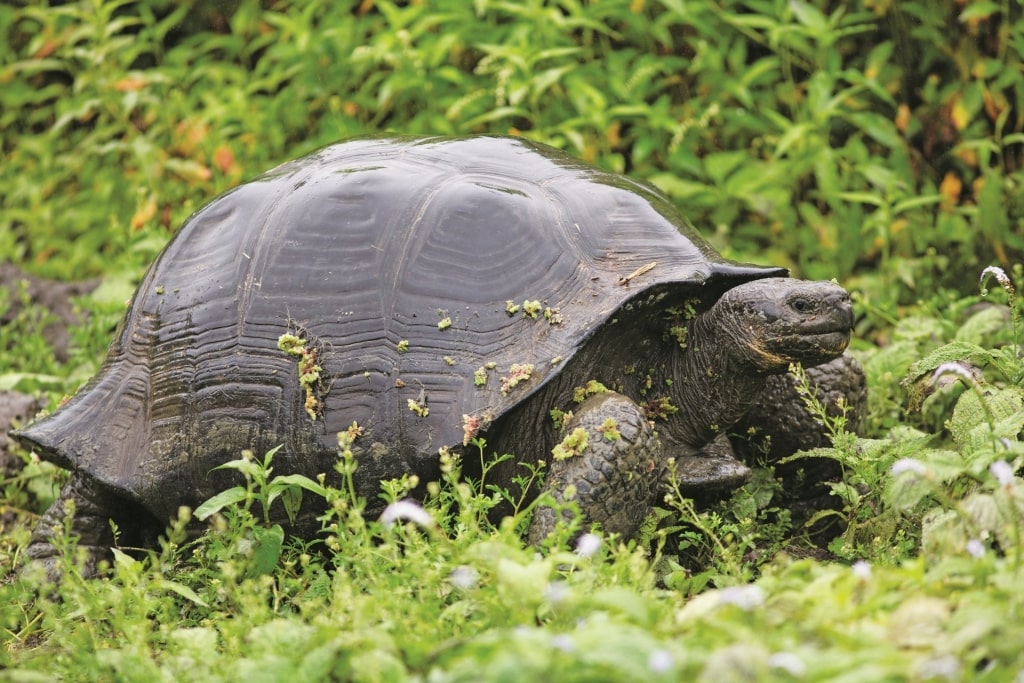
Giant tortoise
Not only is the giant tortoise the symbol of the Galapagos Islands, it’s also the inspiration behind the archipelago’s name, “galapago,” an old Spanish word that means tortoise. Dating back almost three million years, the original giant tortoise evolved into 15 different types of species. Today, only 10 of those species remain on the planet.
Read: Why Are the Galapagos Islands Important?
Giant tortoises can live to be more than 100 years old. The species differ in size and shape, but they’re typically four feet long and weigh over 500 pounds, making them one of the largest species of tortoise in the world. Dome-shelled tortoises live on larger islands with humid weather, while saddle-backed tortoises tend to gather in arid environments.
Marine Iguanas
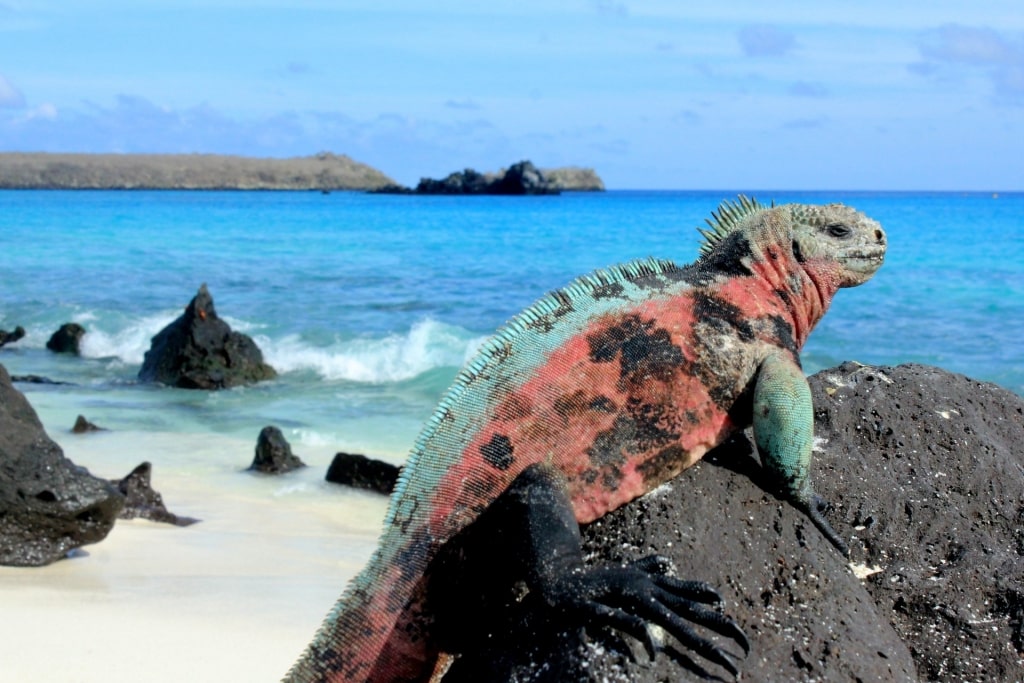
Marine iguana
As one of the endemic species of Galapagos animals, marine iguanas are the only iguanas in the world that are capable of living at sea. You will typically spot them sunbathing on top of the islands’ rocky shores, as these cold-blooded reptiles need to heat up after spending a certain amount of time in the water.
There are roughly 200,000 to 300,000 marine iguanas in the Galapagos Islands. Young marine iguanas are typically black, while adult marine iguanas can be found in combinations of black, green, red, and gray. The largest iguanas are found on Fernandina and Isabela Islands, while the most colorful ones (in a striking combination of red and green) are in Española and Floreana Islands and are nicknamed Christmas iguanas.
Marine iguanas mostly feed on algae that grows near the shore, and because they have a diet with high concentrations of salt water, you’ll often see them sneezing out salt crystals through their snout.
Flightless Cormorant
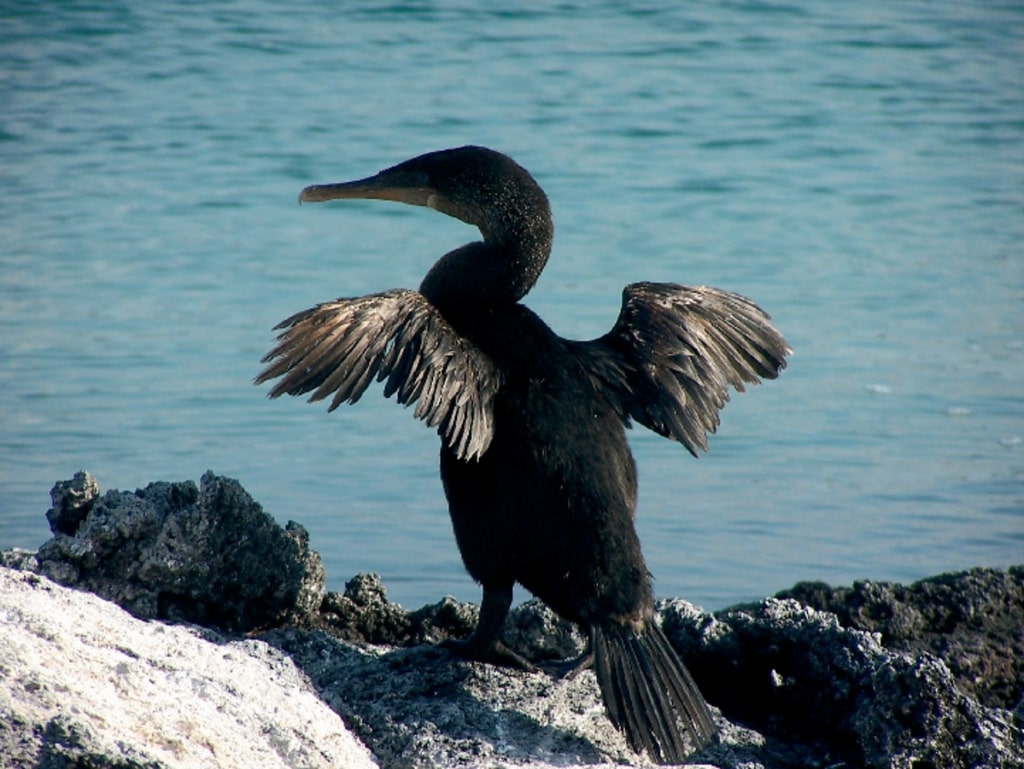
Flightless cormorant
As its name suggests, the flightless cormorant is the only species of cormorants in the world that cannot fly. This endemic species to the Galapagos lost their ability to fly after they adapted to the islands’ ample food supply and lack of competition. As a result, today’s evolved species have mutated wings that are much smaller than the wingspan size they would need in order to fly.
While it can’t take to the air, the flightless cormorant is incredibly agile in the water, where it mainly feeds on eel, fish, and octopus. Their muscular legs and webbed feet allow them to dive deep down into the ocean, and their flexible necks allow them to hunt for food found between rocks and reefs.
Galapagos Hawk
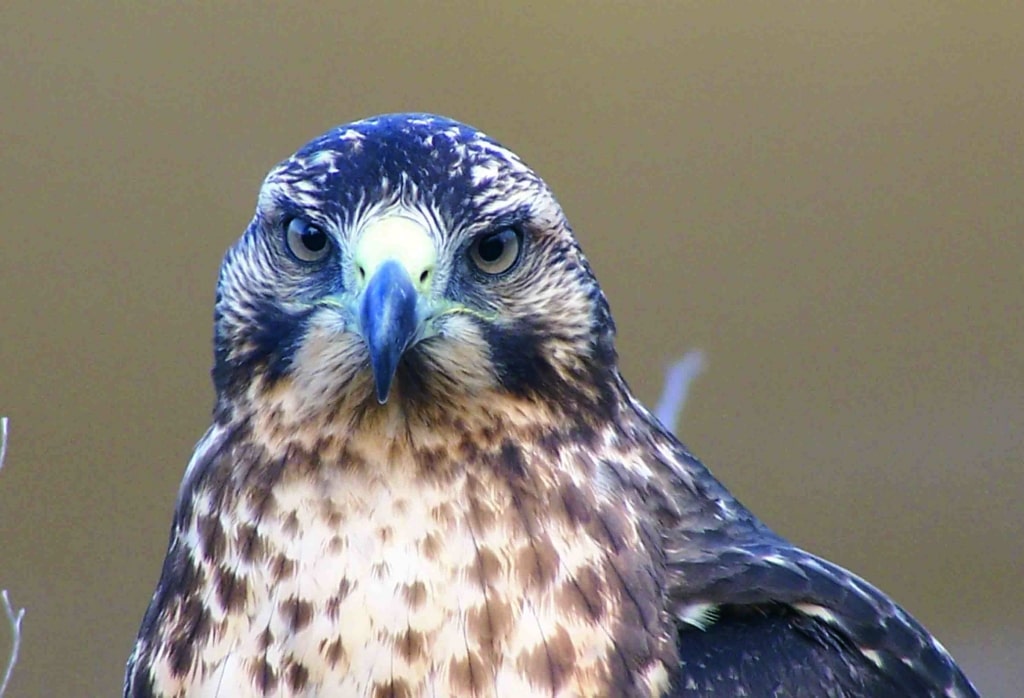
Galapagos hawk
The Galapagos hawk is the only bird of prey found in the Galapagos Islands. It is a rare raptor species and endemic to the Galapagos.
These aggressive predators mainly feed on invertebrates, but will also hunt rodents, reptiles, turtle hatchlings, and small birds. Their feathers are usually dark brown or black and are similar in size to American red-tailed hawks. As is the case with most hawks, females are larger in size than their male counterparts.
Lava Lizard
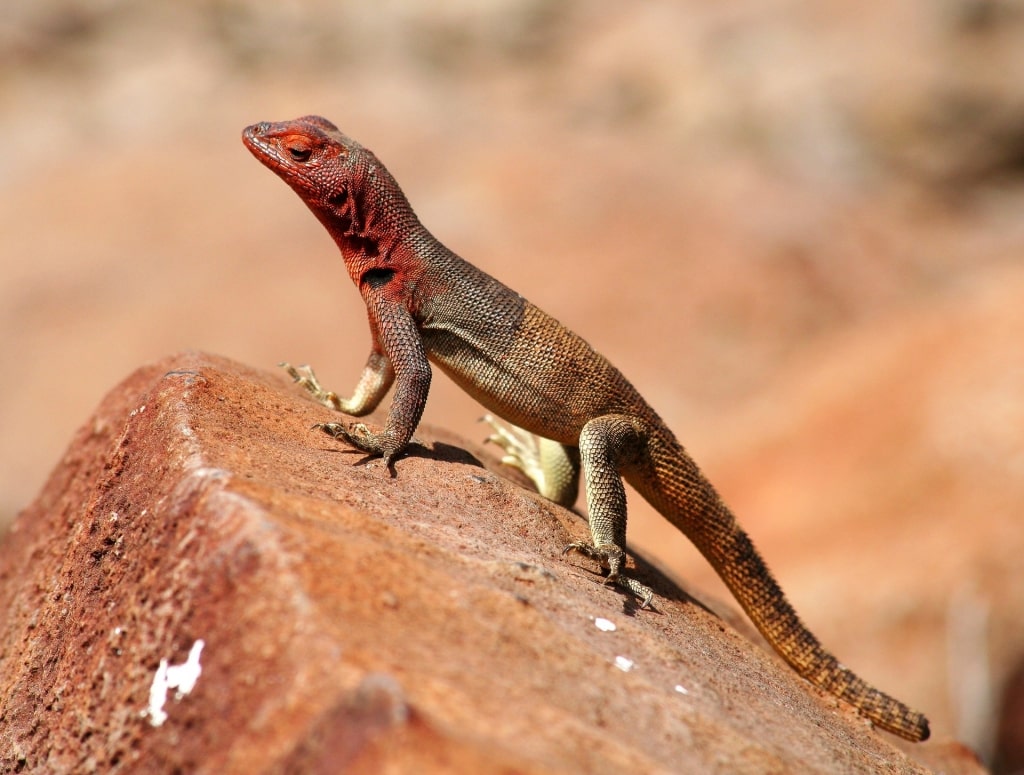
Lava lizard
If you visit the Galapagos, you are likely to see several lava lizards sunbathing on top of the lava rocks—hence their name. They are the most abundant reptile species on the islands.
While there are seven species of lava lizards in the Galapagos, it’s almost impossible to tell the difference between them. It’s easier to distinguish male lava lizards from female ones, as males are larger and have stripes, while the females are a bit smaller and display a red head and throat.
When male lava lizards feel threatened by other lizards, they engage in a push-up competition in order to intimidate one another. They also have the unique ability to self-amputate their own tails if they happen to get caught by a predator.
Galapagos Mockingbird
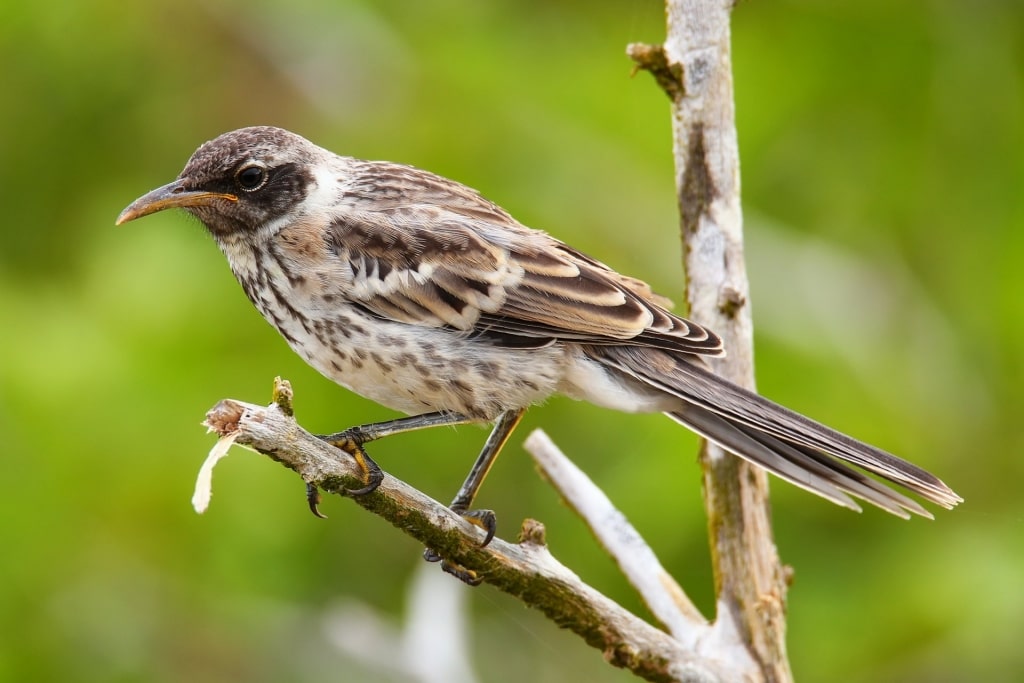
Galapagos mockingbird
A common bird on the islands, the Galapagos mockingbird was another species that played a role in the evolutionary studies of Charles Darwin. He noticed that the Galapagos mockingbirds from different islands varied in size, beak shape, and distinctive markings. This discovery led him to his theory of natural selection and how animals adapt in order to thrive within their environment.
These mockingbirds live in dry, coastal areas and eat a wide variety of foods including finches, lava lizards, insects, centipedes, and seabird eggs. During the islands’ drier season, they have been spotted flying up to tourists and trying to sip on their bottles of water.
Galapagos Shark
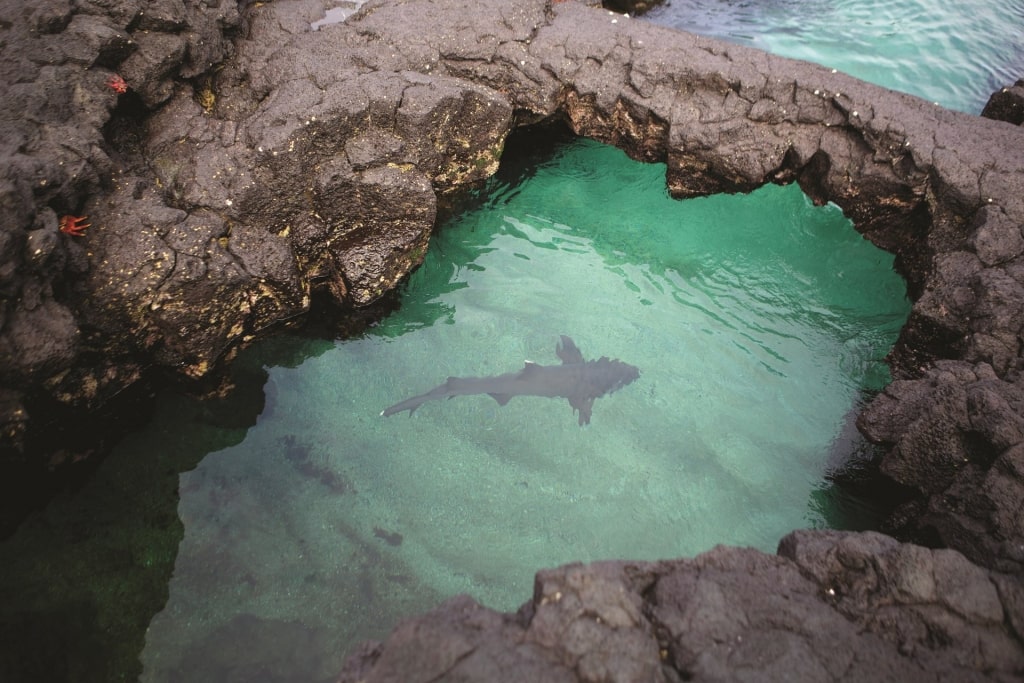
Galapagos shark
The Galapagos shark is found all over the world, even though it was originally discovered in this archipelago of islands. They are similar to reef and dusky sharks, but mainly differ in their inner skeletons, as the Galapagos sharks have significantly less vertebrae than their counterparts.
These underwater predators primarily feed on bottom-dwelling fish, octopus, and squid, but they also hunt fur seals and sea lions. Galapagos sharks like to hang out in shallow waters and have been spotted in reefs. While they are found all over the Galapagos, they tend to congregate mostly around Wolf and Darwin islands.
Ready to see Galapagos wildlife for yourself? There’s no better way to experience this adventure than on a Galapagos cruise with Celebrity Cruises.
Browse itineraries on our website and book your next incredible vacation today.
